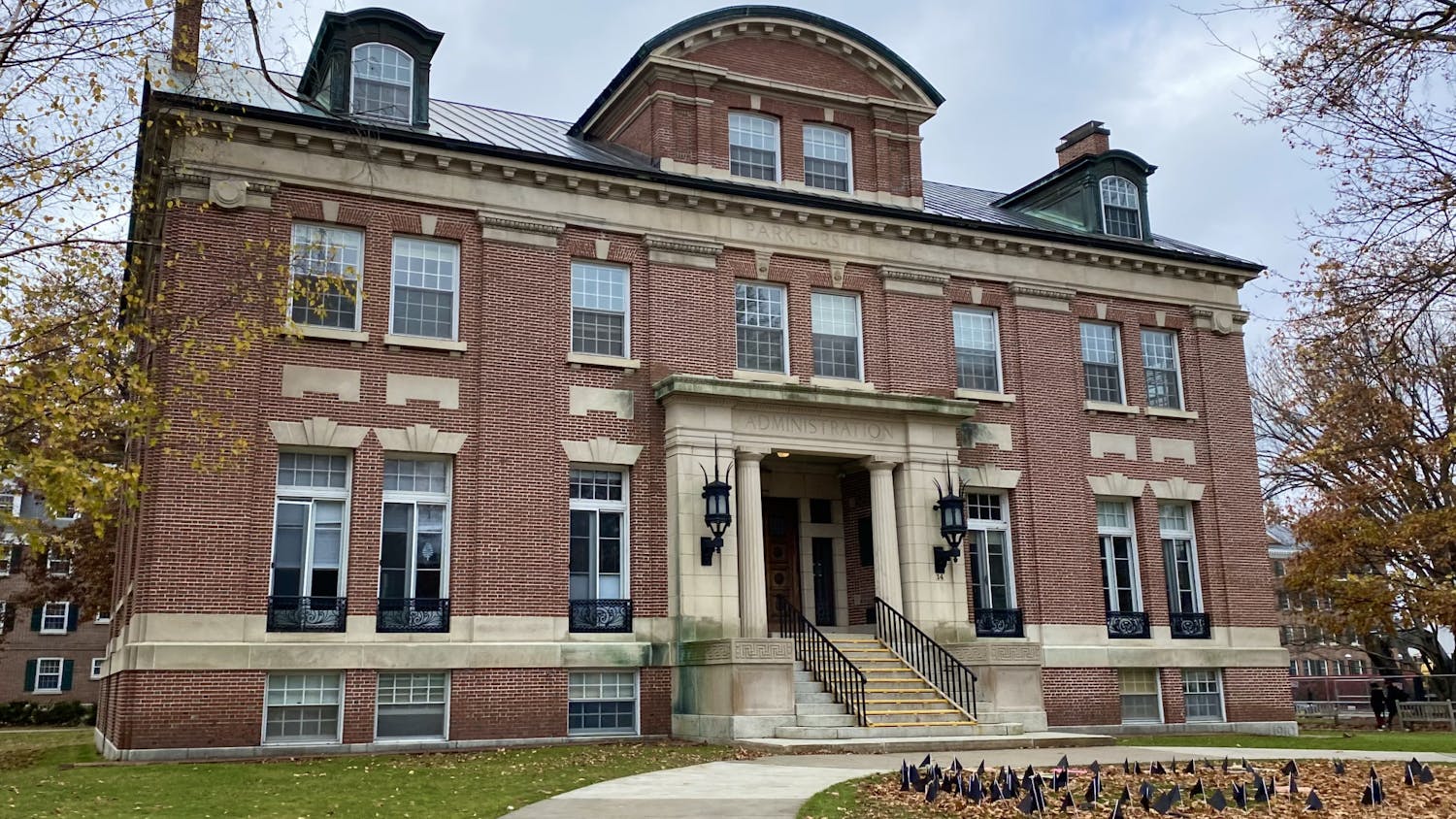Whether in music, visual art or writing, it’s hard to deny that environment plays a pivotal role in creating art. If there’s anything I miss from freshman year, it’s the setup of my beloved room in North Fayerweather Hall. It pains me to say that my dark, carpeted room in Topliff Hall does not have the same creative effect on me as North Faye, with its spacious layout and wood flooring. Although spaces like the Tower Room and Sanborn Library evoke that same essence, I deeply miss the privacy from freshman year that allowed me to write my music out loud.
Hannah Huang ’26, however, is lucky enough to have a room in Butterfield Hall that she said inspires her creative energy, where she feels motivated to produce visual art. Huang particularly enjoys Butterfield’s charm — characterized by its moody lighting and wooden accents.
“My room feels cozy, like a cabin, as opposed to an industrial building or a curated hotel,” Huang said. “I’ve also curated a pretty impressive poster collection which covers the entire wall above my desk and that always creatively inspires me when I’m coming up with sketches.”
For artistic pursuits on campus, Huang recalled her experience taking a studio art class and the resources offered by the Black Family Visual Arts Center. According to Huang, the BVAC studios provide a convenient set up for art students to pursue their art.
“The lighting in the studios on the third floor is really nice, especially because they have automatic skylights,” Huang said. “The overall vibe of the room is great, with concrete walls and desks that can be turned into easels. I felt the most immersive creativity there because it’s just a cool space.”
Not only can a given space facilitate creativity — it can inspire art as well.
Lucia Hartray ’27 is passionate about film and theater. In FILM 30, “Documentary Video Making,” Hartray is working on a film about the Marsh Brothers Deli in West Lebanon. Hartray said the deli itself was a primary source of inspiration for the film, with much of the footage directly emphasizing its environment and decor.
“There’s a captivating uniqueness of this place, particularly how the space is used, and I feel like our film definitely makes an effort to capture that,” Hartray said. “It’s kind of cluttered, they have stuff pinned up everywhere and the space is like a record of the history of the place.”
Hartray, who is also a member of The Dartmouth Sings, an a capella group, said she wishes there were more spaces that were designed for inspiring collaboration and creativity. She said the rehearsal spaces available, such as those in Sudikoff Hall, were not “designed with the arts in mind.”
“The practice rooms have terrible acoustics, and you can always hear what everyone else is doing, and they can hear you, so it doesn’t feel private,” Hartray said. “It doesn’t seem to be designed for collaboration.”
Collaboration is a common feature of spaces that enable creativity. Huang noted that the BVAC studios feel inspiring in part because they facilitate close proximity to other students working on their artistic projects.
“Sometimes you have to work late into the night if you’ve procrastinated on a piece of art, and usually, a handful of other students from the class have also seriously procrastinated,” Huang said. “So, you’re all working in the studio together on your individual projects. It’s comforting in a way because it’s like parallel play.”
Hartray emphasized the importance of a space that possesses privacy and intimacy for a cappella practice. The Sings spent a term rehearsing in Thornton Hall, which Hartray particularly enjoyed due to the tranquility of the architecture.
“I particularly appreciated the privacy and the aesthetics of the place,” Hartray said. “Out of all the main white buildings, Thornton is my favorite because I love its wood panel [and] dark academia vibe. I enjoy spending time in spaces like that.”
Photographer Emilie Hong ’25 emphasized the importance of utilizing a space that parallels her work. Hong said she appreciates certain campus buildings’ older architecture and natural lighting.
“I really like the women’s, gender and sexuality studies office,” Hong said. “It’s beautiful, like all the other old parts of the library. I also love the Chinese Language House. I feel that all these places have a lot of really nice windows and natural light.”
Hong said she considers herself a “people photographer,” explaining her artistic vision as one of capturing the relationship between her subjects and the spaces they inhabit. As such, Hong said it is “crucial” for her to photograph her subjects in spaces “where they’re comfortable.”
“If someone is comfortable in a space, it will translate into the picture,” Hong said. “Pictures taken in unfamiliar places can be cool, but they often remove a person from their context. If someone is familiar with a space and knows how to move in it, that will reflect in the warmth and personality of the picture.”
Though every artist has a different preference, when it comes to campus, creators tend to gravitate toward spaces that encourage collaboration, offer ample natural lighting and boast aesthetically pleasing architecture. From dorm rooms to delis, studios to rehearsal spaces, every setting has its own distinct impact on the creative process.




